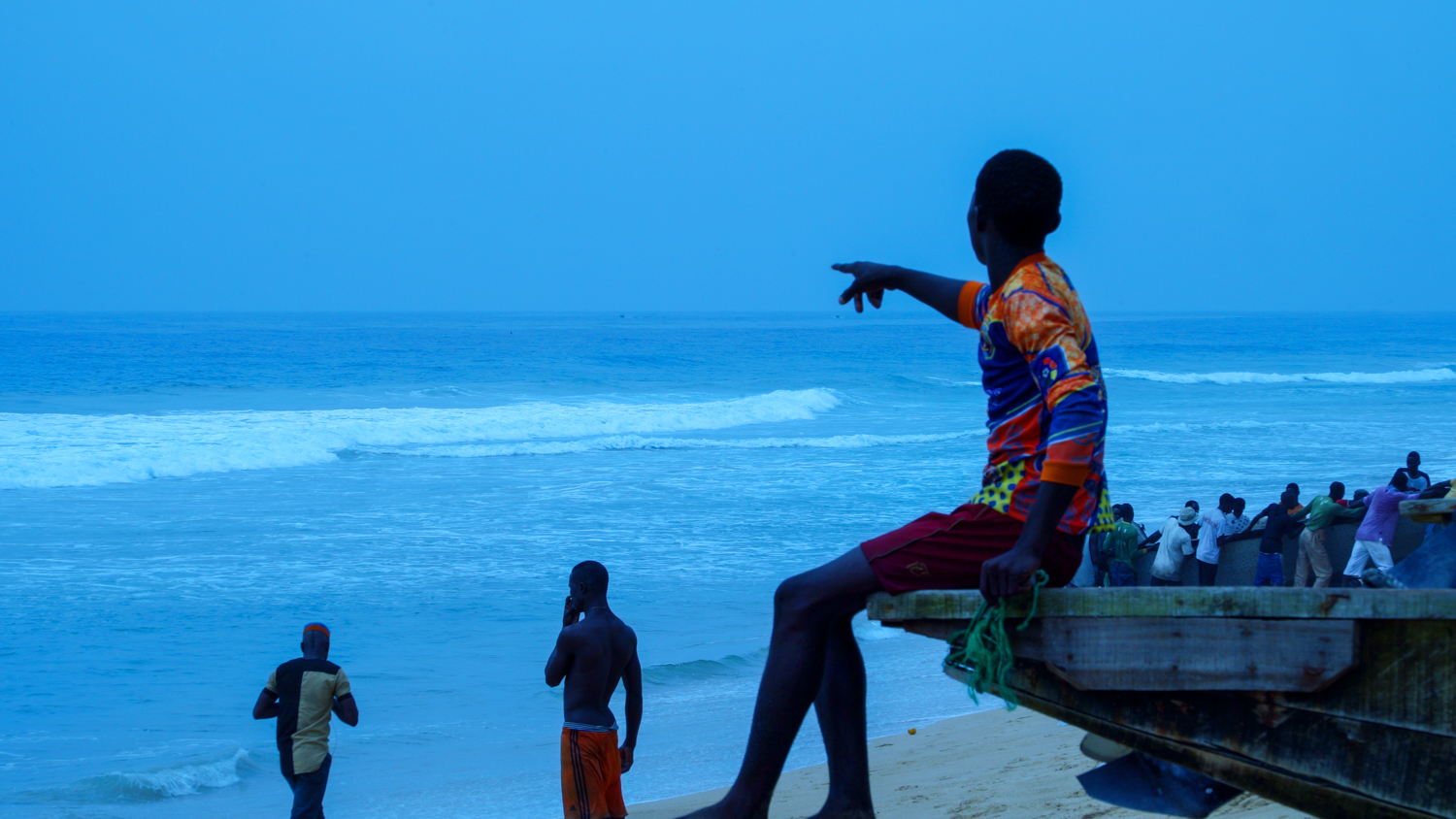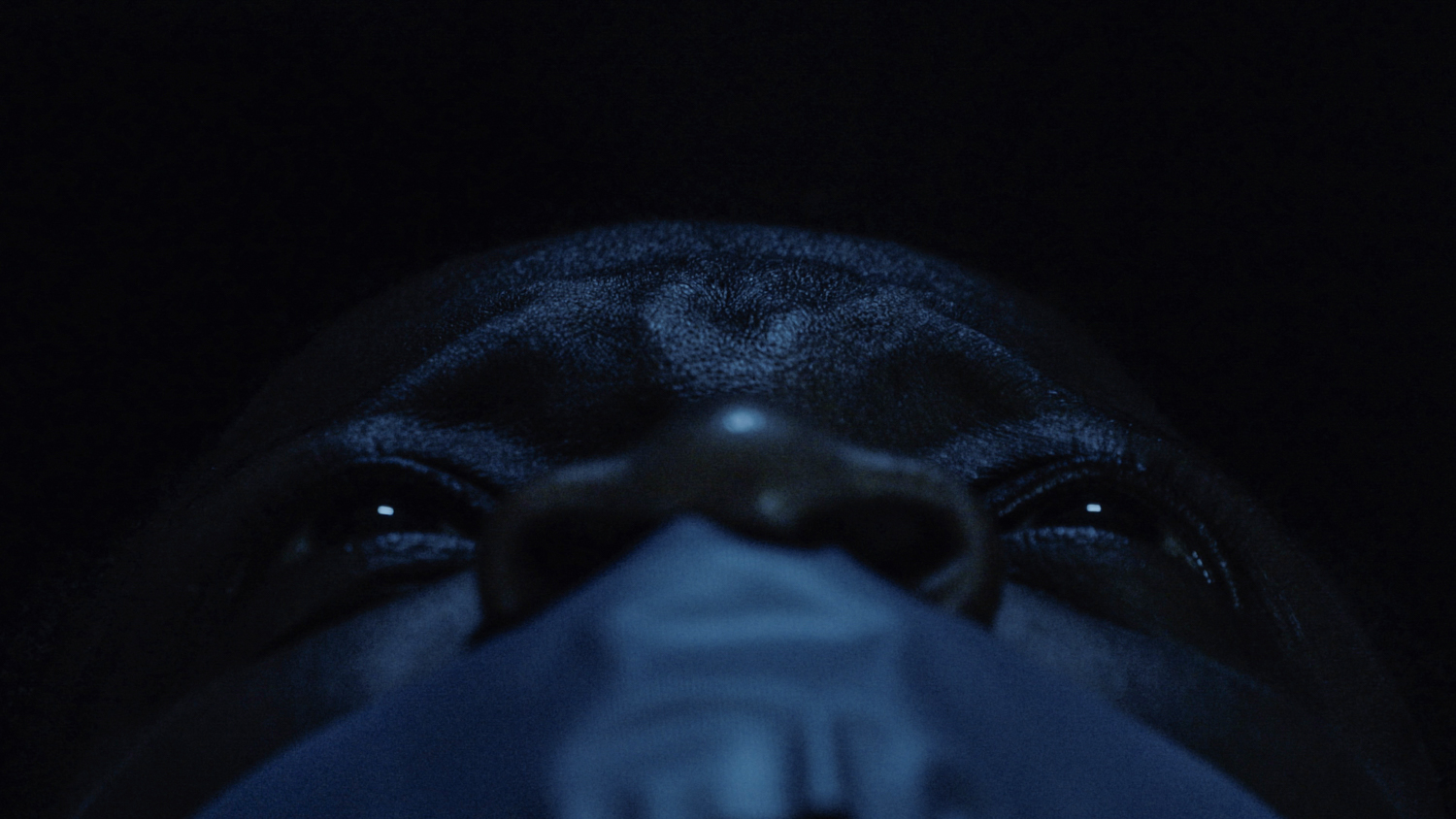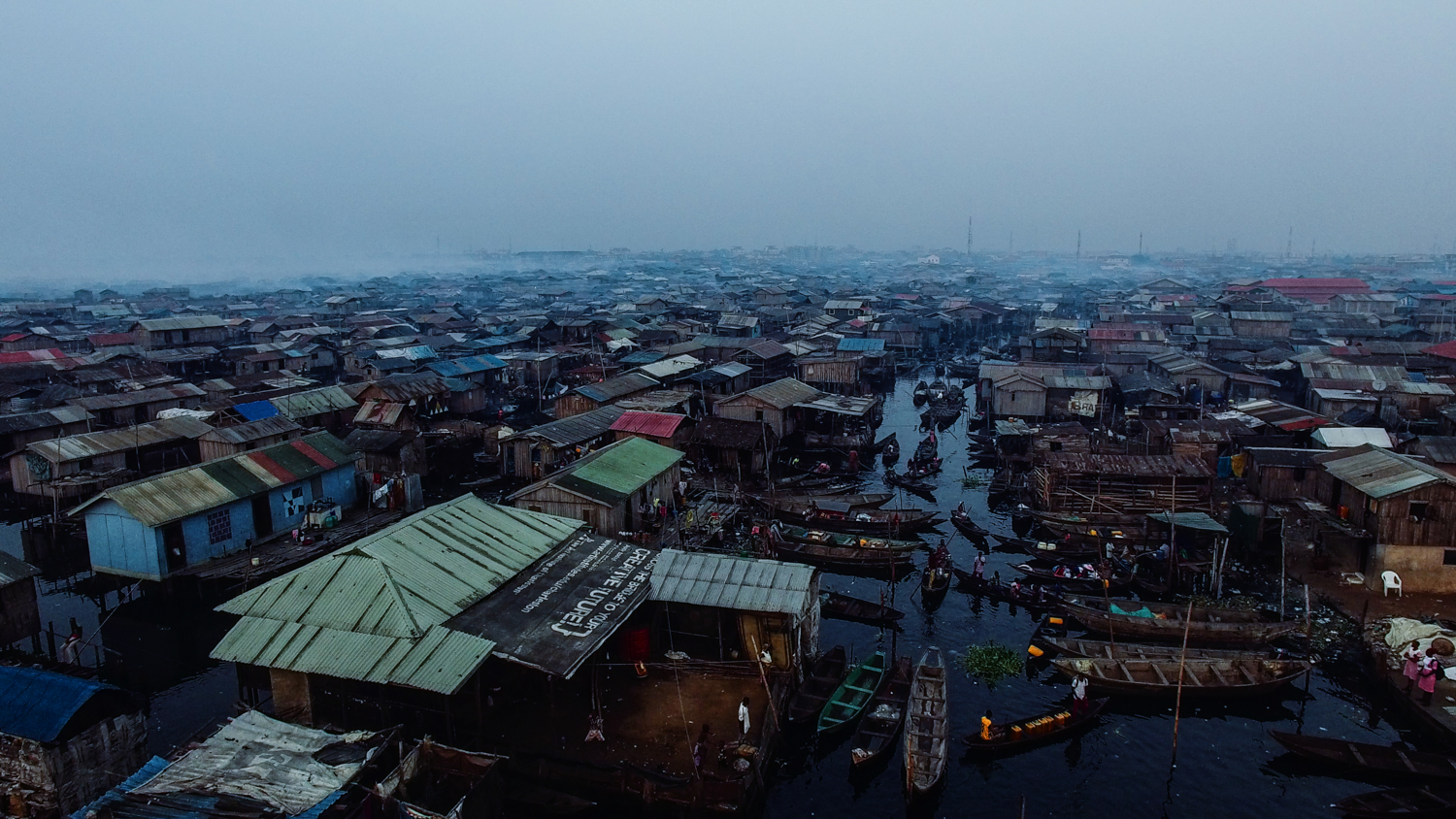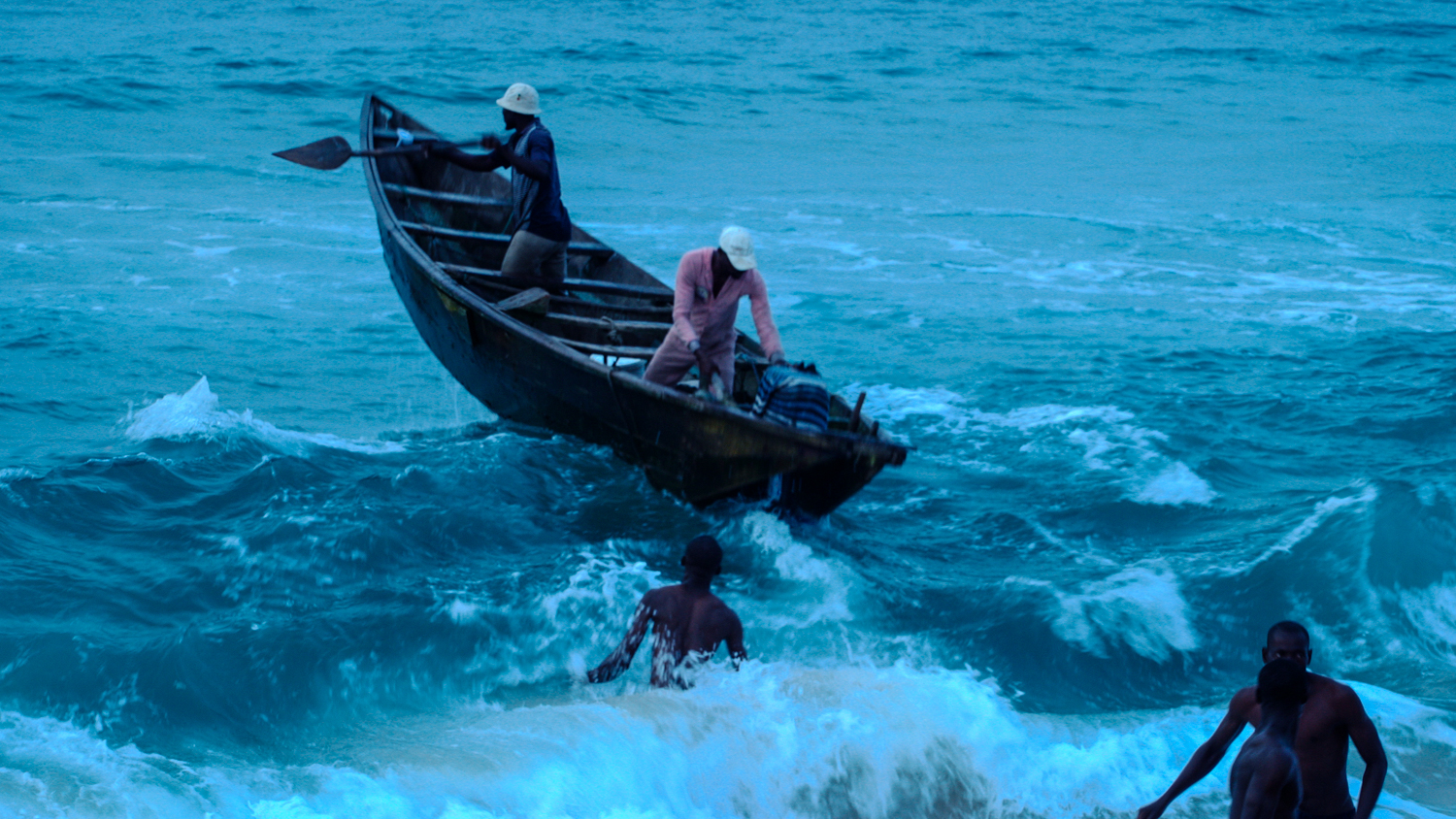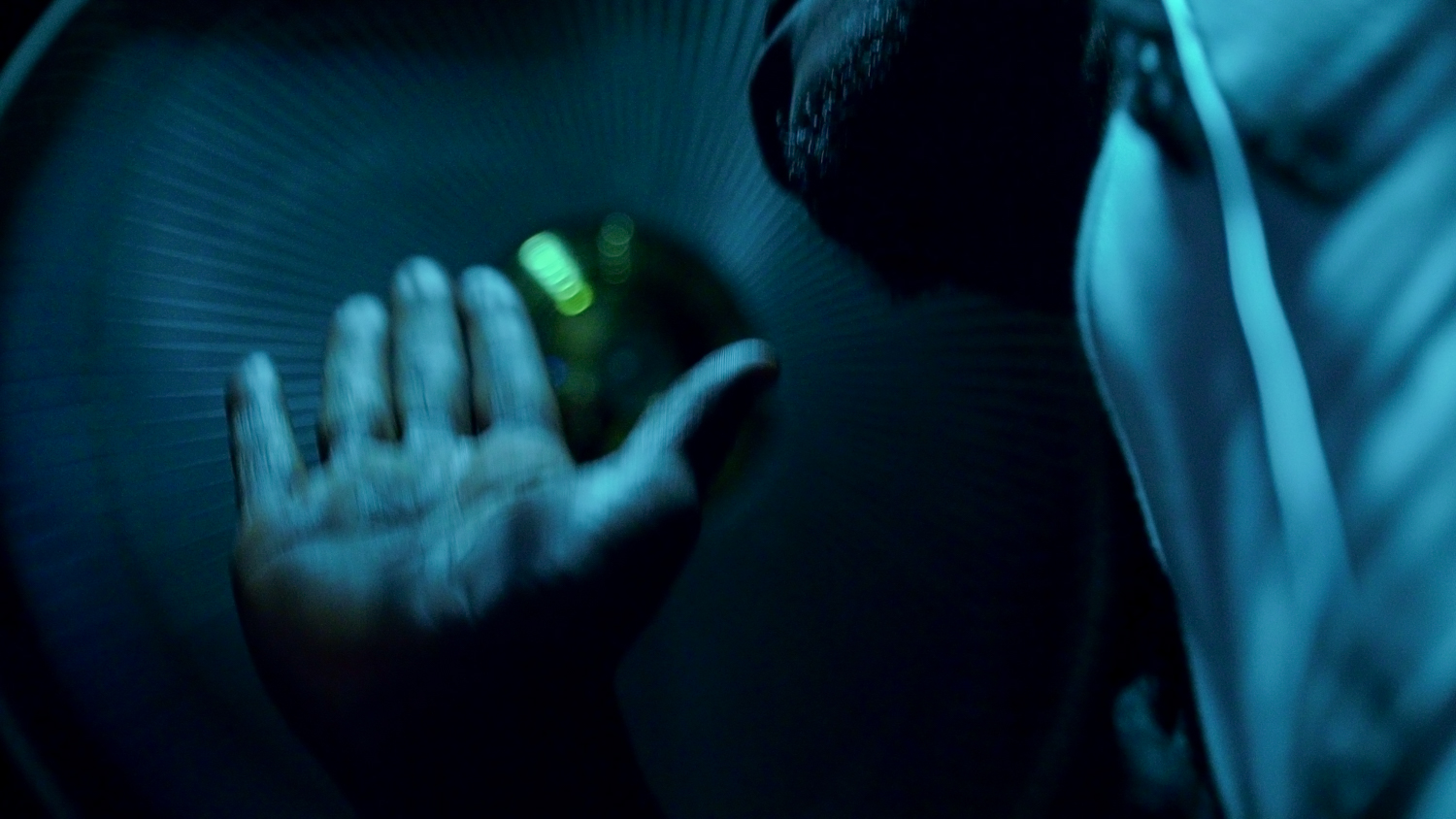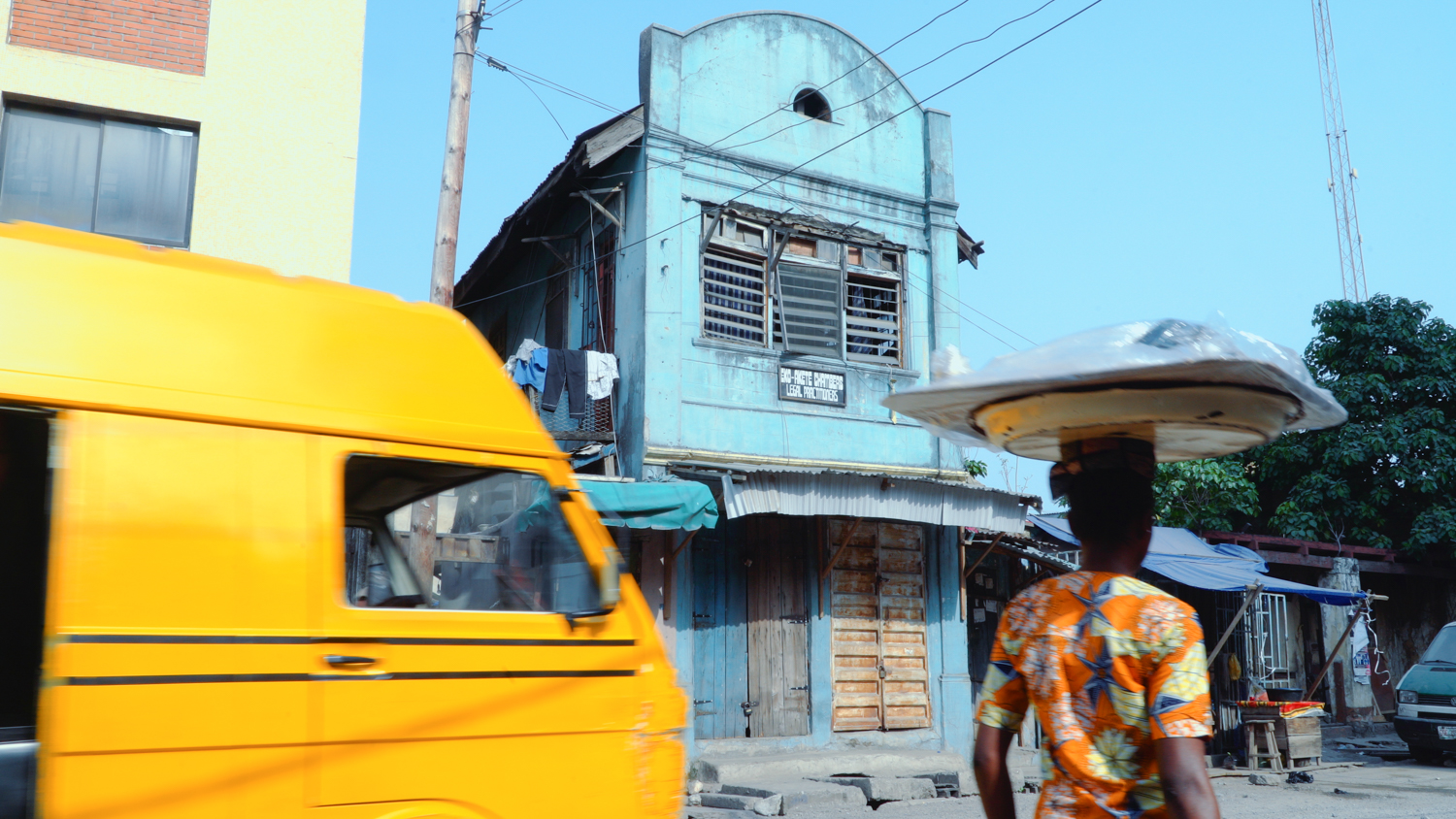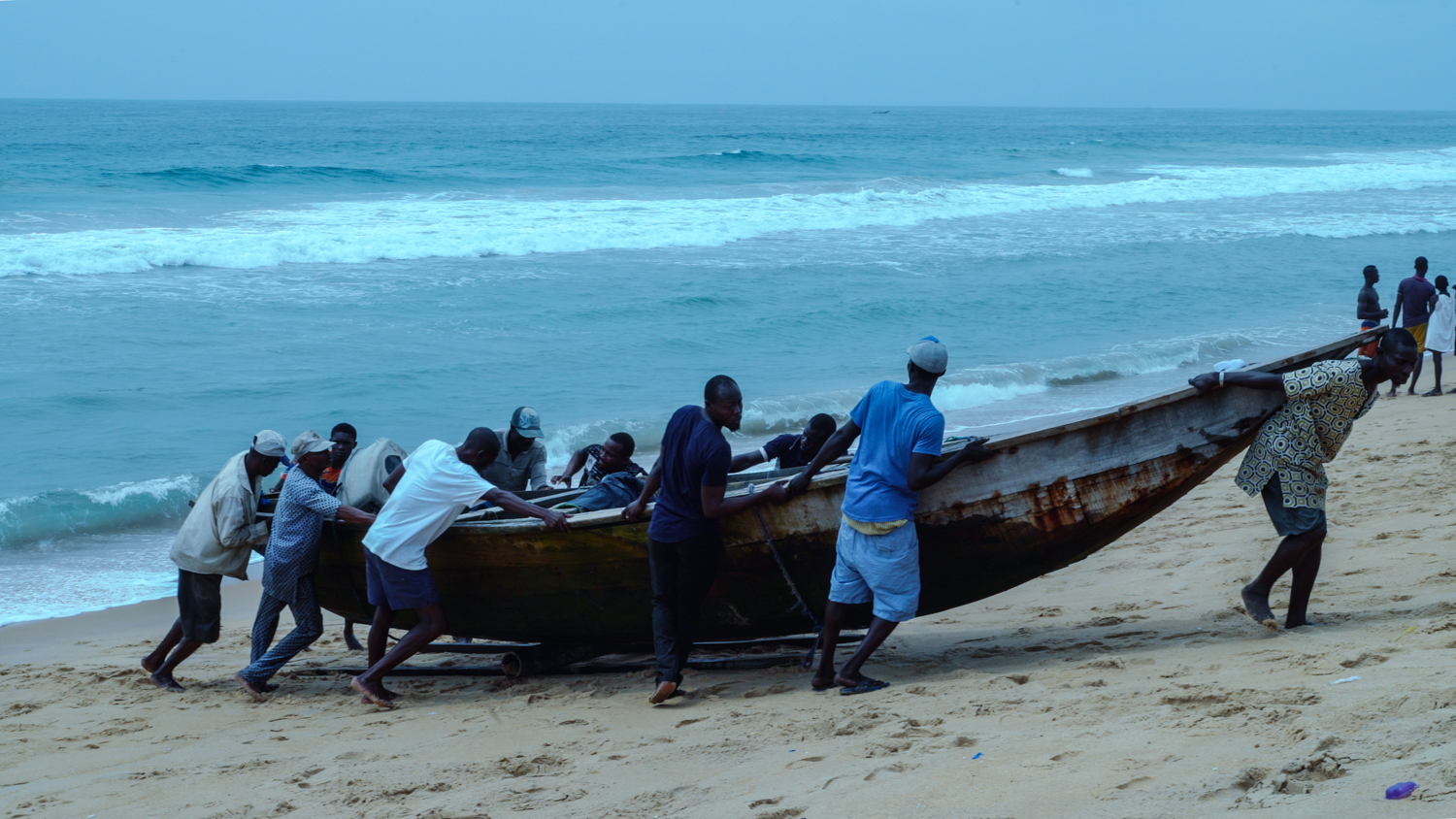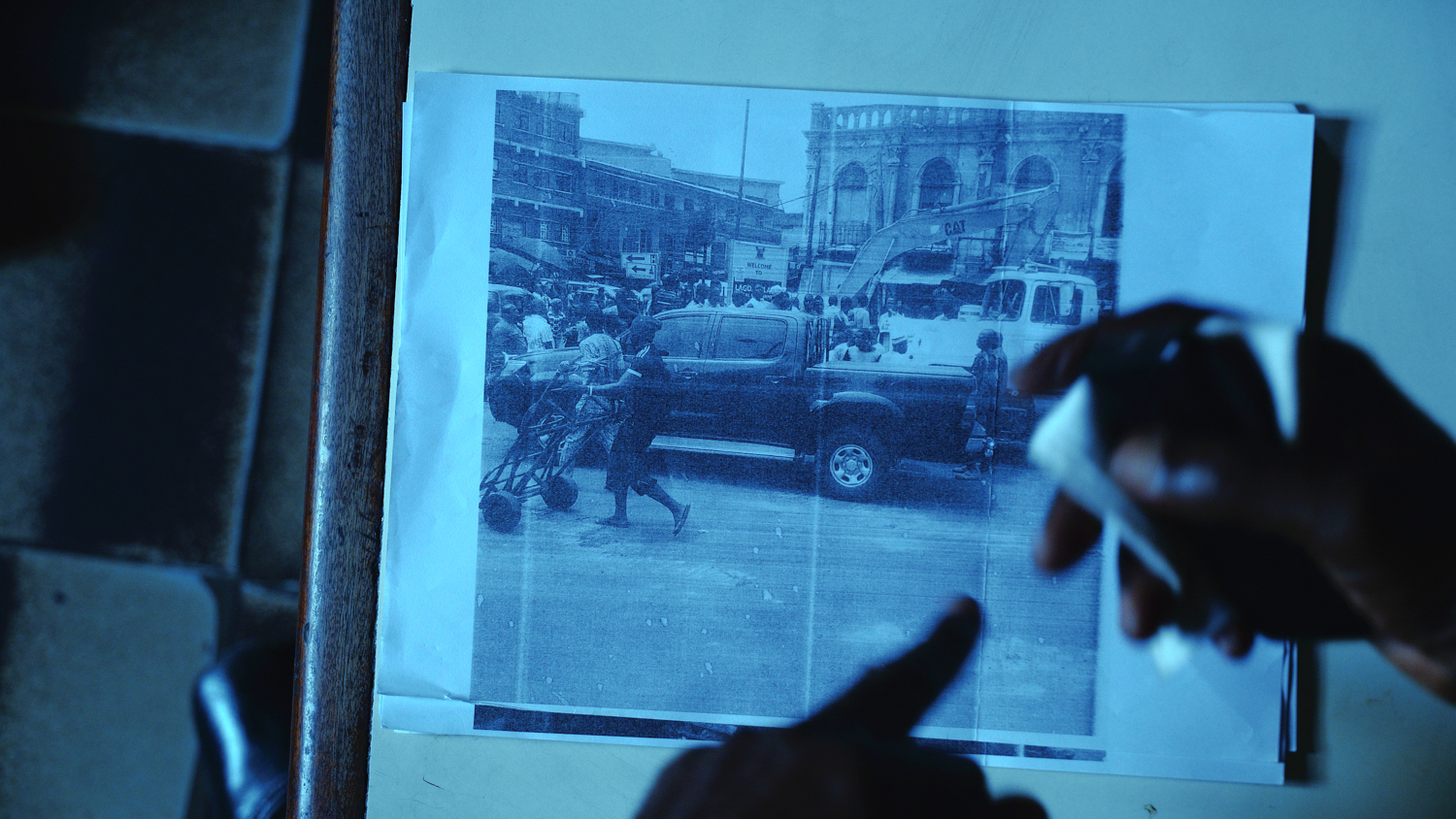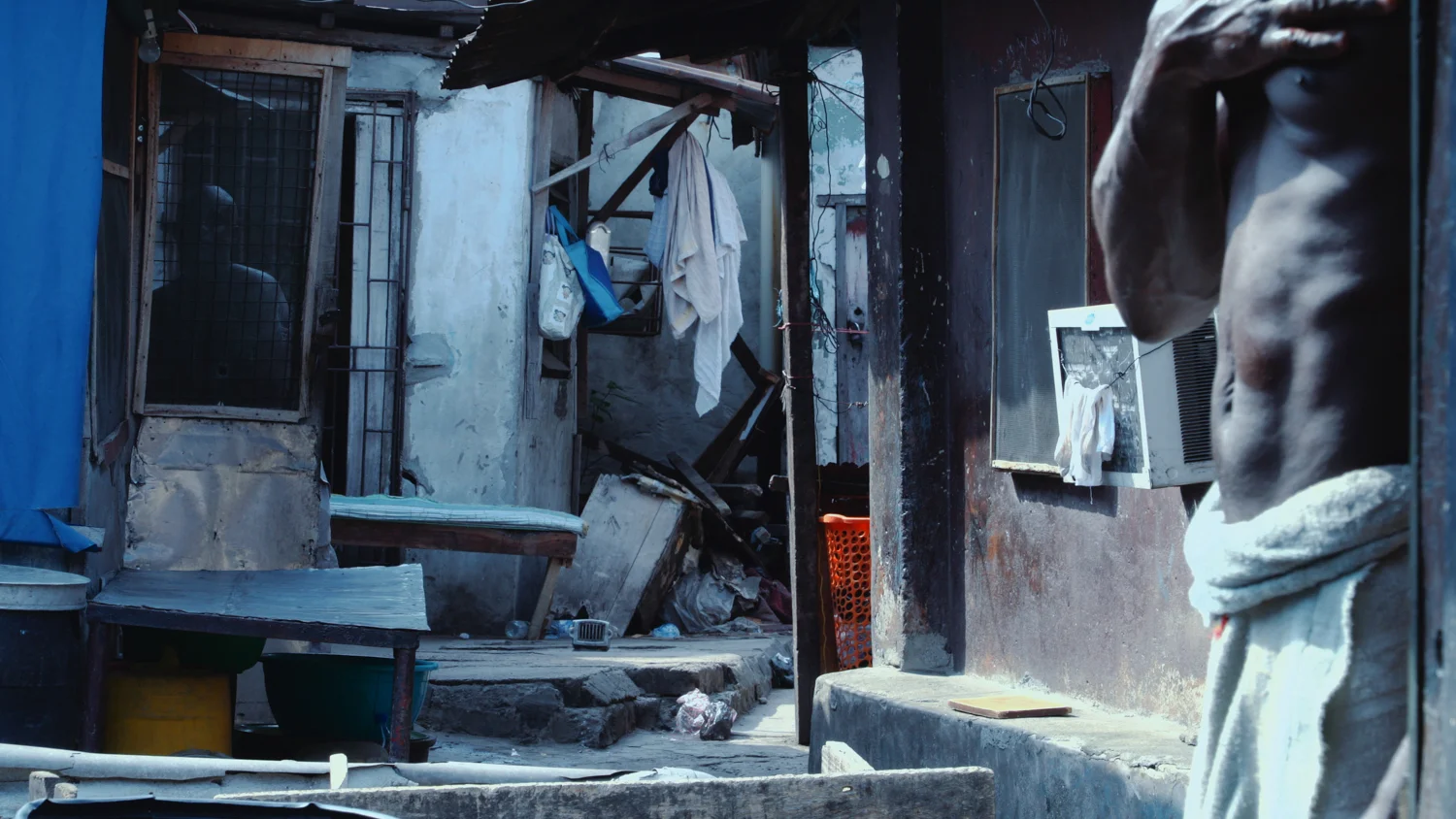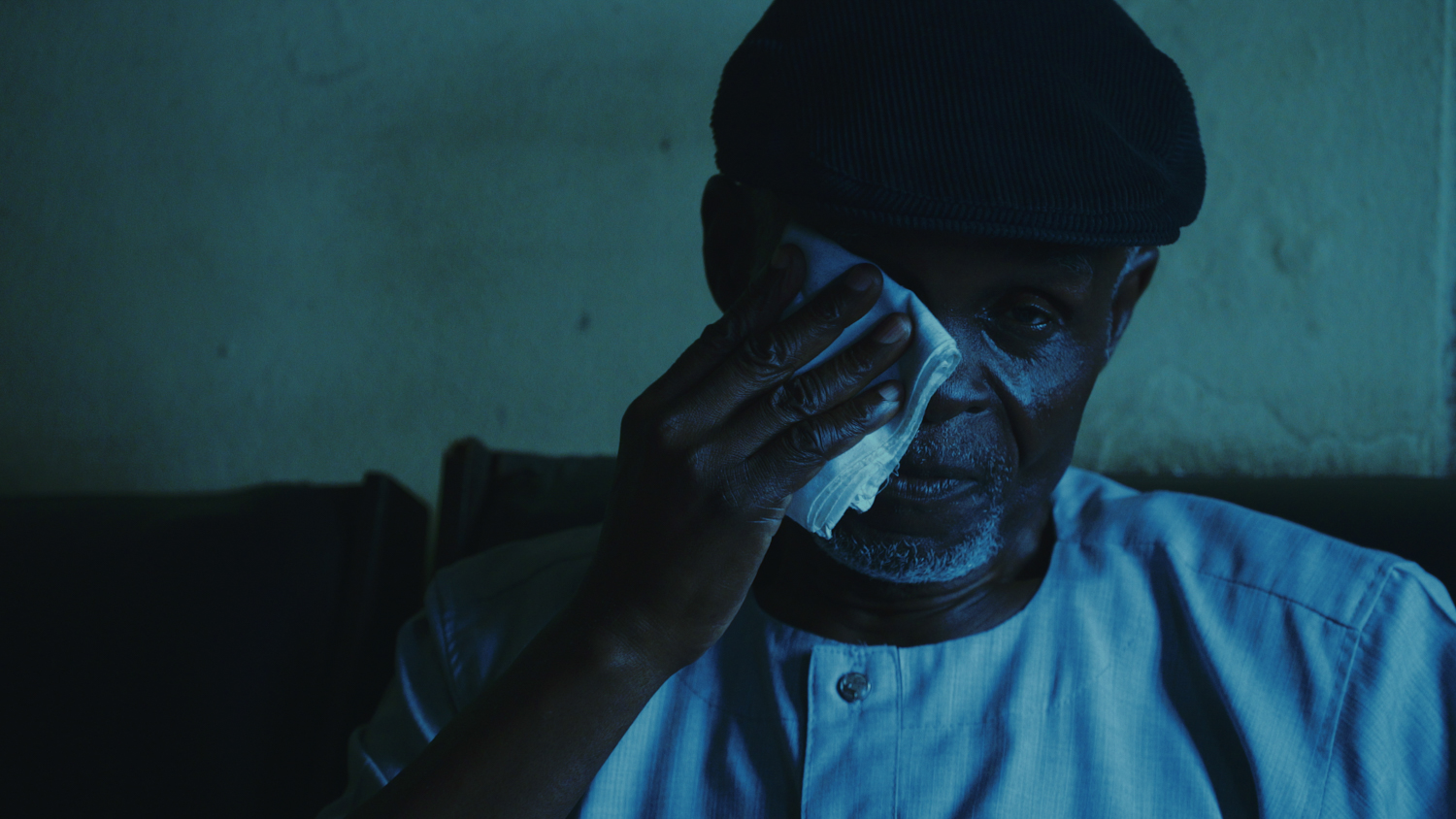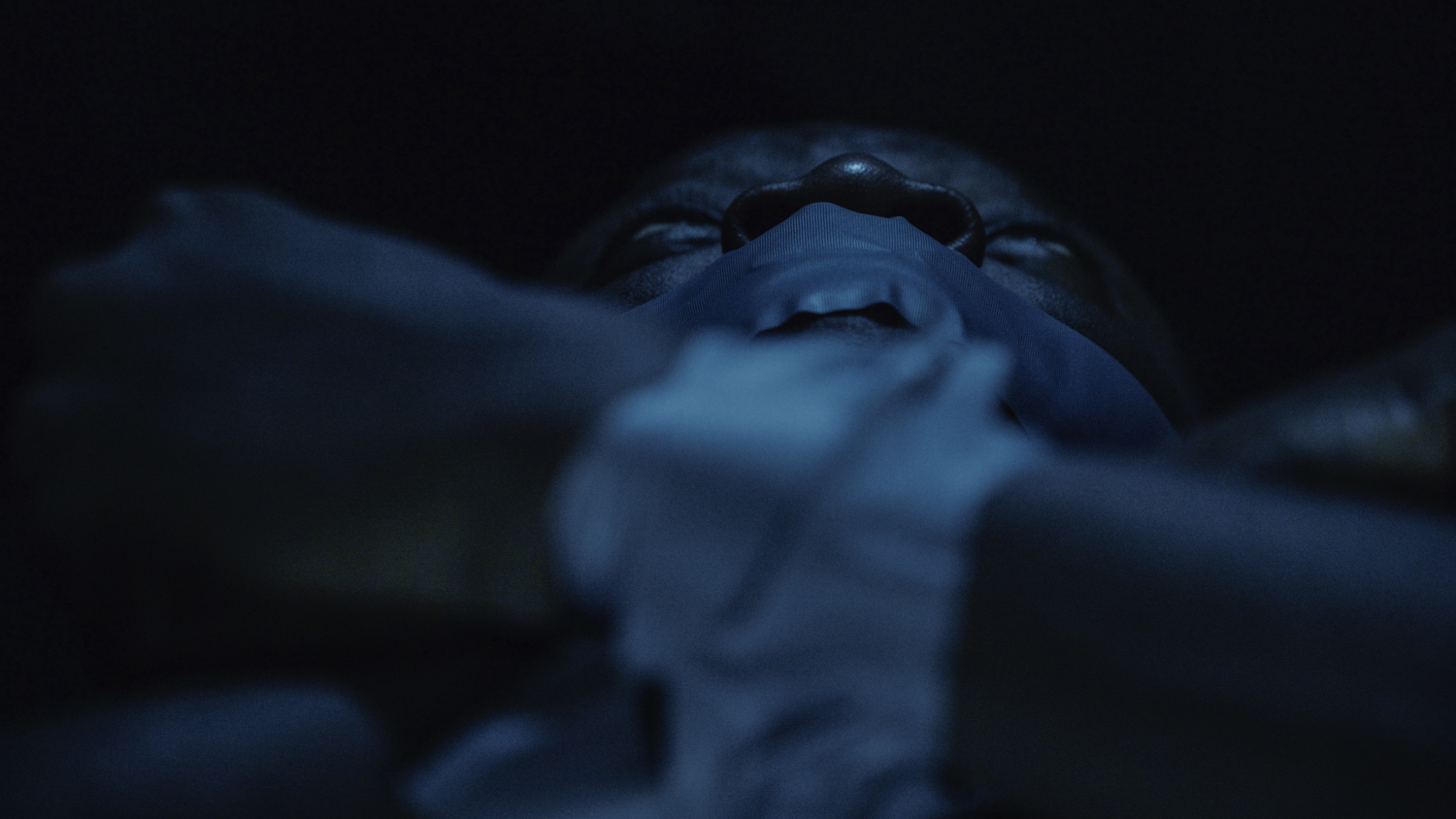Title: point of no return
Format: Documentary / 2-channel 4k video InstallAtion . stereo . color
Length: 30 Minutes
year: 2017
contries of production: nigeria, germany
Producer /Director: Mario Pfeifer
Co-Producer: KOW
On-site producer: Aderemi Adegbite
Sound Design / Mastering: Thomas Wallmann / NEUTON
CoMmissioner / Funder: goethe-institut lagos, nigeria
Point of No Return is a synonym for former slave ports along the Atlantic coast, where thousands of slaves were sent to the Americas, without hope to ever return. The former slave traders’ island in Badagry near the border of Benin carries this name. The video reconsiders the island as well as the megapolis of Lagos today: A seemingly ideal fishermen colony at the former slave trader’s island as well as a vast growing city – marked between micro economy, colonial hegemony, liberal exploitation and massive corruption – appear on screen.
The images are framed with conversations from some of the last remaining direct descendants of returnees from Brazil. Portrayed in their homes, which had been built after Brazilian designs, members of the families Martins, Augusto and Lawson talk about their ancestors’ return, the celebration and later the decay of Brazilian culture in Lagos during the past decades. Each protagonist tells their personal story to urban and economic aspects that altered the Brazilian Quarter’s architectural, social and political pattern through the modernization of Lagos, in which economical, social and religious impacts led to the decay of this cultural heritage.
Point of No Return documents some of the last premises of the community, its memories and the physical manifestations of the Brazilian Quarter. Drone footage depicts the massive growth of the urban environment, and how it threatens the quarter. Imagery produced in the National Library of Lagos looks at different publications such as the culture magazine “Nigeria” from the 1950s, when the Brazilian Architecture of Lagos blossomed, and the results of the English and Portuguese colonial economies were celebrated.
In between each chapter of the two-channel-video installation a music video connects those historical debates with the present condition. Point of No Return is also the title for General Pype’s – a legendary dancehall musician in Nigeria – latest song that addresses the history of slave migration in the 17th century from Africa’s west coast to the Americas.
The imagery depicts the Brazilian Quarter as well as the former slave traders’ island Badagry. Pype’s lyrics call for an end of contemporary slavery and connects protest movements from the USA and Brazil to those currently taking place in Nigeria. The music video’s visuals depict Pype as somebody symbolically imprisoned, freeing himself through his speech, his artistic expression.
Dancehall has been described as a hotspot of cultural, economic and political struggle, and is a synonym for the cultural exchange from the Americas to the West coast of Africa. Dancehall was once founded as a musical counterculture against the elites in Jamaica, and spread globally. General Pype in collaboration with visual artist Mario Pfeifer follow this trait with Point of No Return, emphasizing the political message through a music video production.
The combination of both a essayistic approach through image production and the production of a music video, Point of No Return aims to speak to a larger audiences across generations. A cultural heritage can only be protected, discussed and analyzed if following generations share knowledge and interest. Thus Point of No Return addresses the dynamics of knowledge production, preservation and distribution crossing genres, formats and styles to lighten up a debate on migrating culture and the threat of capitalism to minority cultures.
